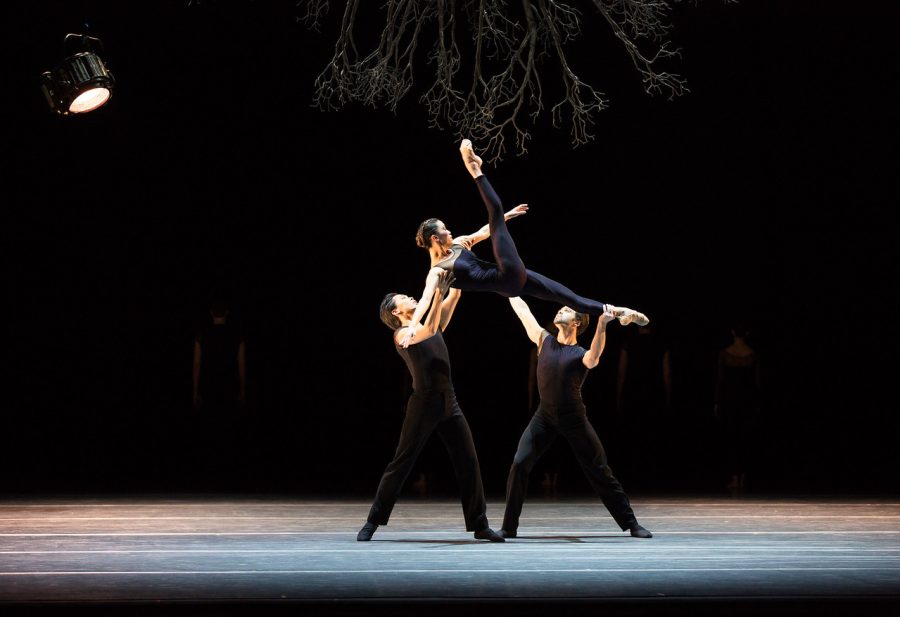On March 23, Boston Ballet showcased its latest production “Wings of Wax.” It was the world-premiere of the show, featuring choreography that delivered three contemporary dances. It was an energetic, affectionate, and awe-inspiring performance that gave the audience a new perspective on life.
Kylián’s “Wings of Wax” attempts to show the rationality of the law that governs the techniques shown. In this rationality, it hopes to display the spiritual and emotional value of each piece. The performers managed to represent themselves and their motions as they coexist through the different spectrums of time and space, as well as how they coexist in the environment. Their movements were filled with the strength, aggression, and anguish of the failure they wished to represent.
“Donizetti Variations” was the first act. This act featured a principle couple performing alongside six corps ladies and three gentlemen as they trotted out on stage. This first act was playful and energetic, the dancers’ actions borderline flirtatious. It is a more traditional piece, in which the main couple featured the man leading his lady throughout their performance, including all of the jumps and lifts. This act was overall graceful; though toward the end of the piece, it appeared as though one of the corps gentlemen wound up awkwardly standing in the middle of the stage, impatiently trying to anticipate his next move.
The next act was “Wings of Wax.” This particular piece featured an upside-down leafless tree with its branched roots at the top, as well as a set of stage lights rotating around the stage, hovering over the dancers. Unlike the first act, this act was more jazz based. One of the main purposes of the piece, as stated in the program by choreographer Jiri Kylián, was to evoke the memory of the ancient story of Icarus and Deaedalus as they tried to escape their imprisonment in the infamous “Laborintus.”
The way in which Kylián chose to portray this concept was by representing these dancers’ way of life as a form of imprisonment within each move. It featured the dancers, particularly the four corps ladies, in a strange kind of imprisonment. These four dancers were trapped in one particular stance, though when a note was struck on the xylophone, these dancers changed their position, imprisoned by the sound. This concept of the choreography also captures how each of the dancer’s bodies was a work of art. This form of art is defined by their desire to defy gravity through their lifts, jumps, and spins as they moved through the air. The ballet dancers were very successful in achieving the art form they desired to.
“Cacti” was the third act. Unlike the first two acts, this piece was more contemporary. It was an affectionate and hilarious piece that featured 16 dancers standing on a platform that looked like it was made up of oversized Scrabble tiles seemingly trapped in place. This piece also featured a string quartet playing alongside the dancers, with a spoken recording narrating with a tongue-in-cheek attitude as they described the dancers’ actions. He would talk about the way they were running, falling, and trying to escape their invisible prison, as they found themselves trapped on these oversized Scrabble tiles.
Cacti were used to represent on of the main themes in this act. The cactus represents difference, as there are various types of cacti, all externally different from one another. These were shown in the way these dancers held themselves. Yet, as it was also shown, these cacti are alike in the inside. Whatever they’ve been through, whatever they look like, their inner contents are all alike.
Overall, the performance was spectacular. It had just the right amount of emotion as these dancers and choreographers portrayed their pieces to impress the audience.
Boston Ballet Productions Presents: ‘Wings of Wax’
April 2, 2017





















































